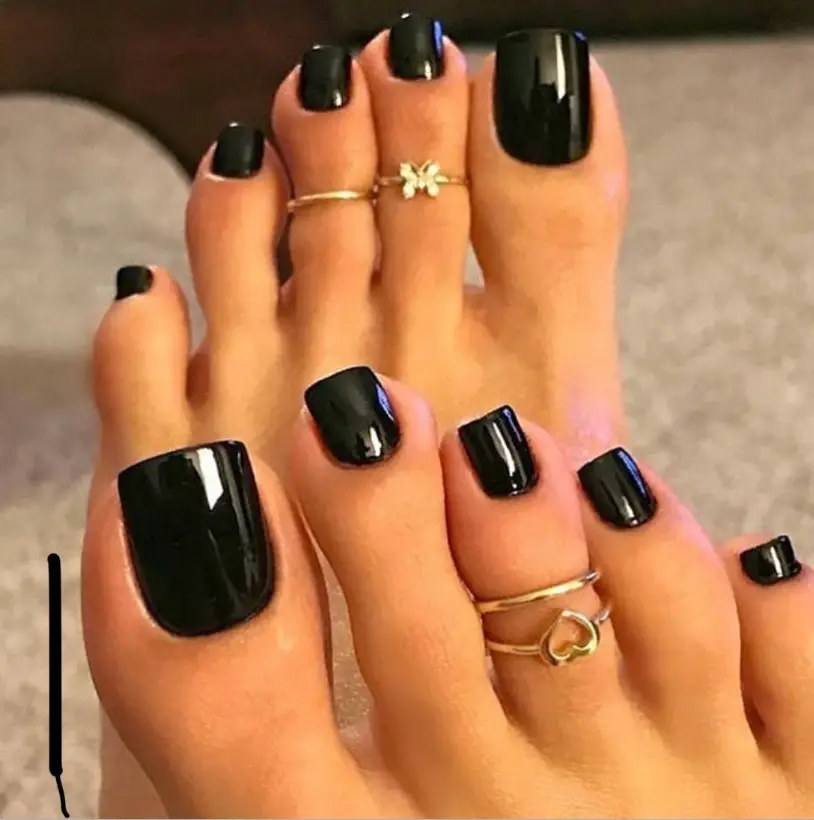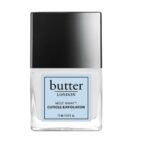
Acrylics are among the most often used nail enhancements. Not only may acrylics be used on fingernails, but you can also use them on toenails to make them look nice. Acrylic toes, also known as acrylic toenails, are natural toenails that have been stretched with acrylics to achieve desired shapes and lengths, much like fingernails. When natural toenails might not always seem uniformly or attractive, acrylic treatment on toenails is used to boost their overall appearance artificially.
What Are Acrylic Toenails?
Natural toenails that were elongated or reshaped using acrylic polymer powder and monomer are known as acrylic toenails. Acrylic toes, like acrylic nails, give your toenails a uniform and attractive appearance.
Is It Weird To Have Acrylic Toenails?
No, getting acrylic toenails is not unusual. Many individuals adore the look of acrylic nails on the toes and hands and will go to great lengths to find a salon that offers the treatment. The application procedure is essentially the same, and you may use the same tips or forms similarly on your hands.
Is It A Good Idea To Have Acrylic Toenails?
While many people have never considered having artificial nails applied to their toes, they provide the same benefits as fingernails. They do—for example, the ability to choose your designs and improve your appearance, or conceal insecure nails below, to mention a few. As a result, acrylic toenails might be an excellent choice for those who prefer to experiment with their appearance and aren’t scared to try new things.
Should I Spend Money On Acrylic Toenails?
If you are a person who mostly wears covered footwear, then you should not consider spending your money on them. Acrylic is rigid and cannot cope with the forces of running and closed footwear. However, if you wear open-toed shoes, you should go for them to make your legs look elegant.
How Long Do Acrylic Toenails Last?
Compared to ordinary nail polish, acrylic toenails are much more robust and long-lasting. Acrylic toenails could last 3 to 4 weeks until you need to refill them. They don’t require as much filling as when acrylic is placed on your fingernails. It is because your toenails develop at a significantly slower rate than your fingernails. The following factors determine the length of time your acrylic toenails can endure:
- The amount of physical activity you engage in — the less walking you engage in, the longer your nails will last.
- Acrylic toenail form and length – shorter acrylic toenails survive longer
- The kind of shoes you’re wearing – To prevent infection, wear open-toed shoes.
- How carefully you look after them – clean and dry them
Is It Safe To Have Acrylic Toenails?
You may use acrylics on your toenails without harming them. They do, however, have specific hazards. Specifically, they raise your chances of getting nail infections or ingrown toenails. If acrylic toenails are done and maintained appropriately, you can significantly reduce these dangers.
Can I Get Acrylic On Short Toenails?
You can use acrylics to conceal short toenails since they can expand the length of the toenails. It is especially effective if one of your toenails is fractured or if your toenail development is limited. If you have a short or damaged toenail, you can use a nail tip or a nail form to cover it with acrylics. Note that the acrylic toenail has a poor bond, so avoid jamming it by wearing tight or closed-toe shoes.
Acrylic Vs. Gel On Toenails?
If you suffer from toenail fungus, acrylics may worsen the condition of your nail; in this instance, gel polish is preferable. Because acrylics are porous, water can seep through and create much more fungus to form! Gel manicures and pedicures are perfect for those who don’t want to go to the salon all that often. You won’t have to worry about polish dulling or chipping since they endure longer. If you’re planning a vacation or intend to spend much time at the pool or beach, you should have a gel pedicure.
If you’re self-conscious about your toenails for any reason, whether it’s because you’re missing nails or they’ve been damaged by a nail infection or other means, getting acrylics applied to your toes might be a big thing in terms of your general confidence. Acrylic nails will hide any anxieties you have about your feet while assuring you that your toes will appear the way you want them to.
How Do You Remove Acrylic From Toes?
You’ll need to bathe your toes in pure acetone to remove the acrylic. Here’s a step-by-step guide on removing acrylic toes:
- Before you begin, eliminate as much acrylic as possible with a nail drill or an e-file.
- Take two containers, one of which should fit within the other (glass kitchenware or plastic works excellent).
- Fill one of these with hot water and another with acetone.
- Then, invert the smaller container containing the acetone into the enormous container containing the hot water. Essentially, you want little to warm up the acetone in a water bath. You should never directly heat the acetone since it will blister your hands or feet!
- Soak your toes for about 10 to 15 minutes in acetone.
- Remove your shoes and scratch off the upper layers of acrylic with a cuticle pusher. If you try to get beneath the acrylic and wipe it all out, it will damage your natural toenail.
- Starting from the cuticle, work your way down to the edge. Gently peel away the top layers, which are soft and easy to remove.
- If any leftover acrylic is still a bit firm, file it down gently.
- Soak for another ten minutes.
- With the cuticle pusher, peel off as enough acrylic as you can and file away any resistant parts.
- Your toes will now be free of acrylic and clean. If they aren’t, soak them for another few moments and scrape off the remaining particles.
If you don’t have any containers, cotton balls and foil can soak off artificial toenails.
Acrylic Toenail Before And After Pictures
Acrylics have always been a favorite among manicure enthusiasts, but now they’re experimenting with the appearance on their toes. Fake toenails are on the rise, and it’s easy to see why. Nail enthusiasts are going toe-to-toe on social media, uploading photographs of their greatest acrylic pedicures. Acrylic toenails are simple to apply; however, most individuals prefer to have their toenails done by a professional. And if you’re stumped, get help from a local salon.
Should I Get Long Or Short Acrylic Toenails?
Long acrylic nails may seem nice and can complement certain clothes and styles, however when it comes to daily comfort; they may make you feel more uneasy than not. As you might expect, having to encapsulate your newly lengthened toenails in a pair of sneakers can cause the toenail to grind toward the front of the footwear, making challenging sports like running, trekking, or high-intensity strength exercises sessions at the gym feel much worse. As a consequence, tiny acrylic toenails are preferable over long acrylic toenails.
Can I Cut My Long Acrylic Toenails?
You may use an e-File or a course file to shorten your acrylic toenails. You can’t, however, cut them. If you use a clipper to trim or cut your acrylics, the acrylic will break, and the toenail will not come off evenly. You’ll need to file down your acrylic nails using an electric drill to shorten them and a coarse file to finish them off.
How Much Does It Cost A Person To Get A Full Set Of Acrylic Toenail Pedicure?
Acrylic toenails are usually about $50. Of course, depending on where you reside, the cost may be higher or cheaper. A minimum budget of $40 to $60 is a reasonable starting point. Colored acrylic toenails are going to be more expensive. If you want colorful acrylics on your toes, expect to pay roughly $85 for it. You might wish to leave a tip if your nail technician does a fantastic job on your toes. Another cost to consider is nail upkeep and application. Monthly fill-ins are typically half the cost of a new set, ranging from $20 to $30. It’s wise to look for a place where you can have your toenails done for a lower price.
Is It Alright To Put Acrylic On A Nail With Fungus?
Acrylic toenails can exacerbate fungal and bacterial infections; thus, it’s not a good idea to use them on a toe with fungus. Fungi and bacteria flourish in warm, damp conditions, and humidity tends to become trapped between your toenails and the acrylic. Placing an artificial nail over a diseased toenail will only serve to retain moisture. If you have a fungus and enclose it with something that prevents it from breathing, it will most likely continue to develop and spread. The fungus can form behind a false nail, making it difficult to remove.
All About Fake Toenails
- Acrylic toenails are synthetic nails applied to toenails with one goal in mind: to improve the foot’s appearance.
- Acrylic toenails that are too long may interfere with sneakers and trap moisture under the toenails long enough for algae to form and grow into fungus.
- When going barefoot, be cautious, especially if you’re on the carpet, because false toenails can snag on the carpet threads, pulling on the toenails and causing them to break. Worse, it may cause your natural toenails to separate from your toes.
- Allow your foot and toenails to thoroughly dry after a bath or shower before putting on your shoes for the day. Using a q-tip to rub across and beneath the extended tips can help them dry faster. Blow-dry fake toenails for roughly three minutes using a hairdryer set on low temperature and high speed.
- During the summer, you may wear them with sandals, flip flops, or open-toed shoes.
- You should not wear square forms with sharp corners since they will grab on clothing and flooring. Toes benefit from flat nail styles with round edges.
- If you apply lotion to your feet after a bath or shower, make sure it doesn’t go beneath these toenails, as it will retain moisture and prevent them from flaking out.
- You should not do acrylic toenails in the cold or winter weather since they will be hidden inside footwear, and you will have few opportunities to showcase them.
- Do not attempt to remove them. Acrylics with natural nails might form a more significant relationship than natural nails. If you take them off, you may end up peeling part or all of your nails, ruining the general form and length of your toenails.
- Because allowing fake toenails to grow out might make them prone to fungus, filth, and grime, they require continual treatment to ensure they are in the most acceptable possible condition.
DIY Acrylic Toenails At Home
You can apply acrylics similarly to toenails as you can apply it to fingernails. Here’s how to apply acrylic on your toes, step by step.
- Make sure your toenails are clean. Soak your toes in lukewarm water for some time before patting them dry.
- Dry the toenails completely. You must have perfectly dry toenails to avoid lifting and fungal diseases. Use a dryer for 1–2 minutes on each foot.
- Ensure your toenails are in good shape. Next, you need to push the cuticles back. Then, if necessary, trim them. After that, file the free edges until they’re smooth. Then, using a nail drill and the proper drill bit, remove any extra dead cuticle.
- Remove any dust that has accumulated. A simple clean with rubbing alcohol, soaked in a lint-free pad should suffice.
- Polish the nail bed and the surface of the nail. Using a buffing block, lightly buff the entire surface of the toenails. After that, wipe them down to eliminate any dust.
- Make use of tips. If you’re utilizing any tips or forms, put them to use. If you don’t want to prolong your toenails, you can add acrylic straight to them.
- Using a nail file, trim and shape the nails. To avoid a ridge, make sure you blend in the area where the tips touch your natural nail.
- Apply a primer and a dehydrator. Your acrylic toes will last longer and connect better due to this.
- Apply the acrylic paint. Make a bead with an acrylic nail brush soaked in the monomer. Then proceed to apply however many beads you require for the chosen method.
- If desired, apply a thin coat of transparent acrylic. It helps enclose a design and smooth down the process.
- Form the acrylic toenails into the desired shape. Begin with the sides and work your way to the free edge. You’re shaping your toenails and ensuring they’re the appropriate length. You can do it using either a manual or an electronic file.
- Buff the acrylic toenails’ surface. To obtain a smooth surface, use a buffing block.
- Remove any dust with a damp cloth. Another brief wipe with an isopropyl alcohol-soaked lint-free pad.
- Now paint the toenails. You can paint over acrylics with conventional or gel nail polish. You don’t need to do this if you’ve used colored acrylic powder or created a design.
- Apply cuticle oil to your cuticles. This last step is optional, but professionals highly recommend it since it maintains the cuticles hydrated and healthy while making everything seem smooth and shining.
Conclusion
You now know everything there is to understand about acrylic toenails. Someone would paint their toes with acrylics to help them appear friendly and show them off. Artificial toenails, like acrylic fingernails, help you feel more feminine or ladylike. If you take excellent care of the acrylic toenails, you will love them and prevent numerous situations when they may break and cause injury.
- Topic: Pedicure








